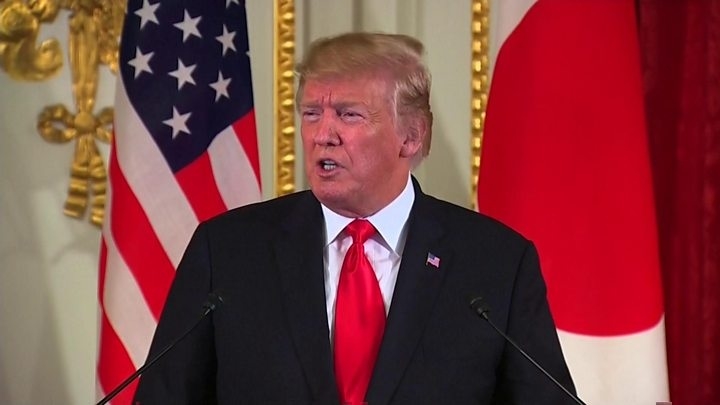Exercise Caution
| Date :07-Jul-2020 |

By DR ARUN MITRA :
Statement by the US President Trump that he would send 9,500 troops to Asia is a new dimension which will have serious ramifications over regional security. The role of US in the past in escalating the situation is well known right from 1962 till date. More over, Indians have not forgotten US partisan attitude during the Bangladesh liberation movement in 1971.
RECENT events in the South Asian region are upsetting and worrisome and these require statesmanship to wriggle out. There has been perpetual tension between Pakistan and India which has led to immense wasteful expenditure on arms race thus marring development in the two countries and adversely affecting health and education in particular. With some periods of thaw, most of the time, the two countries have been engaged in cold or hot war. There have been four full-fledged wars in addition to skirmishes at the border from time to time. India and China had one war in 1962 when China annexed large chunk of Indian land. During this, the Indian Army suffered 1,383 casualties, 1,047 wounded, 1,696 missing and 3,968 jawans captured. On the Chinese side, the PLA (People’s Liberation Army) had 722 soldiers killed and 1,697 wounded. China has been claiming some parts of Indian territory even after that. As a result, there have been clashes at the border.
In 2017, there was tension at Doka La which was resolved and forces from both sides retreated. But the Chinese aggression in Galwan Valley was unexpected and sudden because of which India was taken aback. Killing of 20 Indian soldiers including an officer, and capture of 10 soldiers and 4 officers by the Chinese in most gruesome manner has evoked a reaction of revenge in India who feel cheated and have a defeatist feeling. The experts and strategists have been talking against any larger conflict and have warned to tread cautiously lest the situation gets out of control.
There are however others who, knowing very well the consequences are out to raise jingoism and push the region into long standing conflict. The situation has given alibi to other foreign powers to intervene. Statement by the US President Trump that he would send 9,500 troops to Asia is a new dimension which will have serious ramifications over regional security. The role of US in the past in escalating the situation is well known right from 1962 till date. More over, Indians have not forgotten US partisan attitude during the Bangladesh liberation movement in 1971.
Needless to explain, that the south Asia is a poor region. China does not technically fall in South Asia, but it has long border with India and Pakistan. It also has trade relations with India and strategic relations with Pakistan. So any event that occurs in the region, automatically gets connected to China. Therefore, when we look at the present scenario in South Asia, we cannot ignore Chinese dimension. If we look at the Human Development Index of the region, we find it at the unacceptable level. India ranks at 129 in the global HDI. The ranking of China is 85, Pakistan at 152, Bangladesh 135, Sri Lanka 71 and Nepal 147. Maternal Mortality Rate (MMR) in China 29, India 145, Pakistan 140, Sri Lanka 36 Bangladesh 173, Nepal 186. Infant Mortality Rate (IMR) of China is 8.6, India 36.6, Pakistan 69.3, Sri Lanka 7.4, Bangladesh 30.2, Nepal 32.2. Global Hunger Index of China 25, India 102, Pakistan 94, Sri Lanka 66, Bangladesh 88, Nepal 73. China is better placed than all South Asian countries in terms of development. But its defence budget is very high.
It has announced a 6.6% growth in its defence budget for this year. The growth in China’s defence budget would see spending rise from $167 billion last year to $178.2 billion, an increase of about $11 billion. The country has the second-largest defence budget in the world, behind only the United States. In contrast, India has earmarked Rs. 4,71,378 crore (US$ 66.9 billion1) for the Ministry of Defence (MoD), stating that national security is a top priority of the Government. Both India and China are Nuclear Weapons possessing countries. China has 270 Nuclear weapons, India 120 to 130 and Pakistan 130 to 140. Any escalation would mean long drawn war and perpetual tension on Indo-China border. This would mean immense stress on the economy of both countries which would ultimately fall back on health under the present COVID crisis.
Recently, India has signed an agreement with Russia and plans to spend Rs 38,900 crores on purchasing long range attack missiles and fighter jets. We have to avoid war under any circumstances. Diplomatic and economic initiatives with caution are the need of the hour. When tension was brewing up at the border in April we should have taken it seriously and initiated a dialogue. This is not impossible now even though difficult. It is an irony that global powers have enough money to spend on arms. Even the extreme difficult situations in tackling the COVID-19 crises have not deterred them. We must be cautious that any escalation at the border would not be for short time.
Any increase in the defence expenditure would mean playing into the conspiracies of the Military Industrial Complex who are the real beneficiaries in such situations at the cost of lives of people. We have results of the hypothetical study of Pakistan India nuclear exchange which would put 2 billion people at risk globally. With China it would be worse as it would invite other countries to take benefit. (IPA)